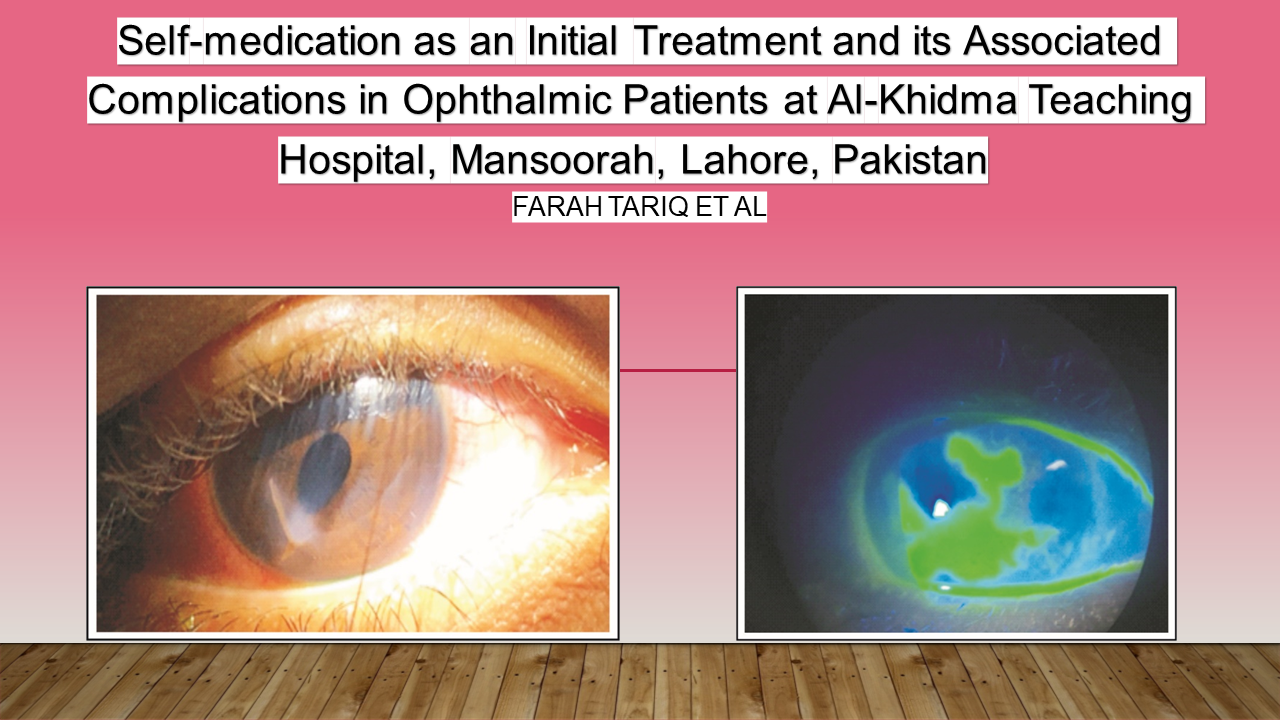Self-medication as an Initial Treatment and its Associated Complications in Ophthalmic Patients at Al-Khidmat Teaching Hospital, Mansoorah, Lahore, Pakistan
Doi: 10.36351/pjo.v40i3.1797
DOI:
https://doi.org/10.36351/pjo.v40i3.1797Abstract
Purpose: To identify self-medications used by patients as initial treatment for various eye problems and to analyze associated complications.
Study Design: Cross sectional.
Place and Duration of Study: Al-Khidmat teaching hospital, (University of Lahore) from October 2021 to September 2022.
Method: This study included 117 patients using traditional eye medications (TEM) and over the counter (OTC) ophthalmic drugs before presenting in ophthalmic outdoor. A semi structured questionnaire was used as a tool to collect the data. All patients aged 18 years and above were directly questioned. For patients below 18 years, responses were collected from the patients themselves when possible; otherwise, the accompanying parent provided the information. Age, gender, educational status and area of residence were recorded. The symptoms compelling the use of TEM/OTC or both, the source and type of medication, diagnosis and any complications that resulted due to self-medication were documented. Complete ocular examination was done. MS Excel was used to record and analyze data.
Results: There were 48% males and 52% females. Rosewater was the most frequently used TEM by 54.7%. Steroids-antibiotic combination eyedrops/ointments were used by 31.6%. Symptoms for which self-medication was done, were redness (64.1%), watering (35.9%), itching (32.5%) and discharge (26.5%). Symptoms did not improve in 54.7%, 26.5% required ophthalmic consultation and only 18.8% had temporary relief. Twelve percent developed complications.
Conclusion: Self-medication with TEM or OTC drugs should be discouraged as these can cause detrimental effects on eyes.

Downloads
Published
How to Cite
Issue
Section
License
Copyright (c) 2024 Farah Tariq, Muhammad Mateen Amir, Zahid Mehmood, Anwar ul Haq Hashmi

This work is licensed under a Creative Commons Attribution-NonCommercial 4.0 International License.






